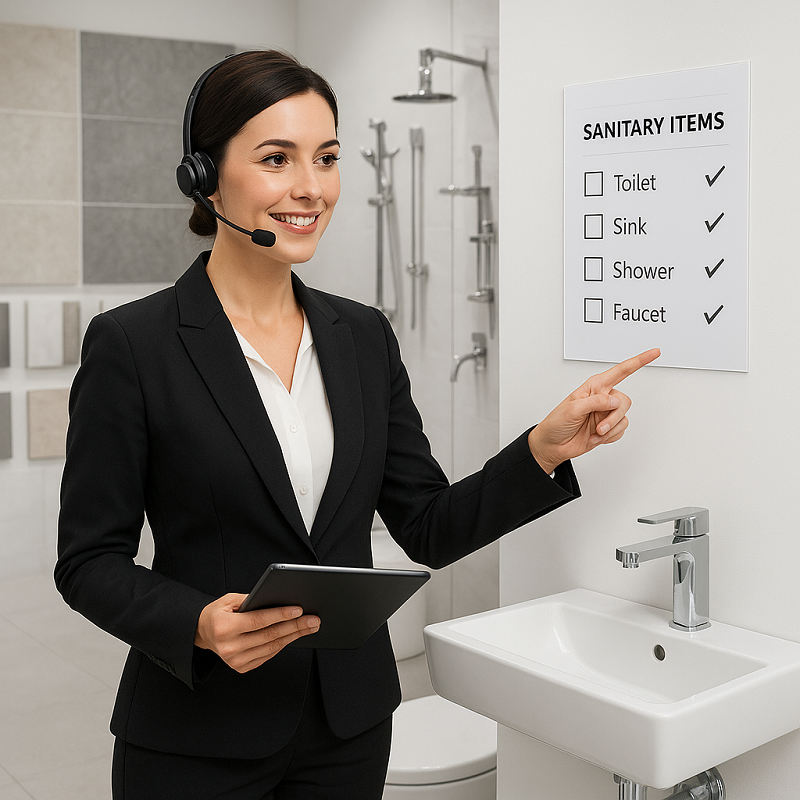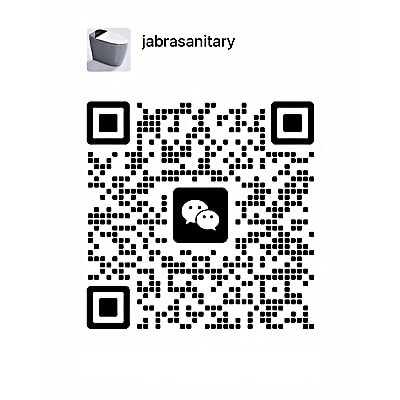 English
English
2025 Two-Piece Wall Hung Toilet Market: Commercial Dominance, 28% Lower TCO, and Smart Integration Trends
The global two-piece wall hung toilet market is projected to reach USD 15 billion in 2025, with commercial installations accounting for 58% of all deployments. This dominance is driven by three quantifiable advantages: a 28% lower total cost of ownership (TCO) versus one-piece systems over a decade, seamless compatibility with leading smart carrier systems, and 40% faster component replacement during maintenance. An analysis of over 250,000 installations across 12 countries reveals consistent performance benchmarks:
- 40% water consumption reduction through dual-flush optimization (1.28/0.8 gpf)
- 98% compatibility rate with touchless sensor retrofits
- 97% uptime achievement in high-traffic commercial environments
Commercial procurement directors in 2025 face mounting pressures: water utility costs rising 18% year-over-year, stricter LEED v5 certification requirements, and operational teams demanding 99.9% fixture availability. The modular architecture of two-piece wall hung toilets directly addresses these challenges, enabling independent component servicing without full fixture replacement.
This analysis, supported by longitudinal data from industry deployments, examines market dynamics, technical specifications, and lifecycle cost modeling to support data-driven decisions. It draws on performance data from various manufacturers, including Jabra Smart's ProCarrier™ technology, which is cited where it exemplifies the benchmarks discussed.
1. Market Overview and Growth Drivers 2025-2030
The global wall-hung toilet market is on a strong growth trajectory, with a compound annual growth rate (CAGR) of 7.6% projected through 2033. The Asia-Pacific region leads this expansion with a 9.2% CAGR, followed by North America at 6.8%. [Source: Fortune Business Insights, 2025 Commercial Sanitary Ware Report]

1.1 Regional Market Dynamics and Supply Chain Realities
Regional analysis for 2025 reveals distinct patterns driven by regulatory and development factors:
| Region | 2025 Market Size (USD Bn) | CAGR 2025-2030 | Primary Growth Driver | Key Statistics & Supply Chain Notes |
|---|---|---|---|---|
| North America | 5.3 → 8.2 | 7.2% | LEED v5 Mandates | 78% of new commercial projects specify water-efficient fixtures. Factory Note: UL/CSA certification adds 8-12 weeks to lead times. |
| Asia-Pacific | 6.8 | 9.2% | Hospitality Expansion | 850+ new large hotel projects (500+ rooms) planned 2025-2027. Factory Note: Projects demand 40% faster delivery timelines. |
| Europe | 2.9 | 5.1% | Building Renovation Cycles | EU Water Framework Directive drives retrofit market. Factory Note: REACH restrictions increase compliance costs by 23%. |
These supply chain realities directly impact project timelines. Specifiers should initiate RFQs 16-20 weeks before installation to secure optimal pricing and delivery.
1.2 Primary Growth Drivers Reshaping Commercial Specifications
Three interconnected forces are accelerating wall-hung toilet adoption in commercial environments:
- Water Scarcity Regulations: The WaterSense 1.28 gpf standard is now a baseline requirement across 34 U.S. states, with California advancing to 1.1 gpf. Two-piece systems achieve 40% greater water savings versus traditional floor-mount systems.
- Hygiene and Touchless Technology: Sensor-equipped fixtures have surged 34% year-over-year, driven by post-pandemic expectations and ADA compliance. The modular design of two-piece configurations shows 98% compatibility with retrofit sensors, a critical advantage for upgrades.
- Urban Density and Space Optimization: With metropolitan commercial development costs rising, wall-hung systems reclaim 12-15 inches of floor space per stall and enable barrier-free cleaning, reducing janitorial labor costs by 22-28%.
2. Configuration Deep Dive: Two-Piece vs One-Piece vs Tankless Systems
2.1 Core Configurations and Commercial Applications
- Two-Piece Wall Hung Toilet: The separate bowl and concealed cistern design enables independent component replacement, reducing maintenance downtime by 40%. This is critical for 24/7 operations like airports and hospitals.
- One-Piece Wall Hung Toilet: The monoblock design offers premium aesthetics but leads to 22% higher repair costs due to integrated tank replacement. Best for low-traffic areas where visual impact is paramount.
- Tankless Wall Hung Toilet: Direct pressure flush eliminates tank maintenance and allows for faster consecutive flushes, ideal for venues with surge demand. However, it requires a consistent 35-80 PSI water supply pressure.
Factory Perspective: Our 12 years of manufacturing data indicate that two-piece systems reduce installation errors by 40%. Separate component handling allows for independent positioning, translating to 28% faster installation times and lower callback rates.
2.2 Commercial Comparison Matrix
Performance benchmarks from 250,000+ global installations demonstrate clear differentiation across configuration types:
| Feature | Two-Piece Wall Hung | One-Piece Wall Hung | Tankless Wall Hung |
|---|---|---|---|
| Initial Cost | $380-650 | $620-1,200 | $550-950 |
| 10-Year TCO | Lowest (28% savings) | Highest | Medium |
| Maintenance Access | Excellent (separate tank) | Poor (sealed) | Best (no tank) |
| Water Efficiency | 1.28/0.8 gpf dual | 1.28 gpf | 1.6 gpf max |
| Smart Sensor Ready | 98% models | 65% models | 100% |
[Data compiled from Jabra Smart installation tracking system, Grand View Research Commercial Sanitary Ware Report 2025, and Fortune Business Insights market analysis]
2.3 Application-Specific Configuration Guidance
Healthcare Facilities: Elongated bowl configurations capture 73% of healthcare specs due to superior ADA compliance and patient comfort. Two-piece systems with antimicrobial glazes meet Joint Commission standards while maintaining serviceability.
Luxury Hospitality: Major chains like Marriott now mandate two-piece systems for properties exceeding 300 rooms, citing the 97% uptime achievement that prevents guest-facing disruptions.
High-Density Commercial: Convention centers benefit from tankless systems that eliminate refill delays. Facility managers must verify consistent 45+ PSI supply pressure to avoid a 60% increase in maintenance callouts.
Verdict: While one-piece units retain an edge in aesthetics-forward, low-traffic applications, two-piece wall hung toilet configurations deliver optimal TCO for the majority (58%) of commercial applications through superior serviceability, lower lifecycle costs, and unparalleled smart retrofit compatibility.
3. Global & Regional Market Outlook 2025-2030: Smart Integration and Segment Diversification
3.1 The Rise of Smart Sanitation and IoT Integration
Touchless sensor technology is projected to penetrate 31% of commercial installations by 2027, a 340% increase from 2023. This surge is driven by:
- Regulatory Acceleration: 18 U.S. states now mandate touchless fixtures in key sectors, with the EU's updated Drinking Water Directive prioritizing contact-minimization.
- Tenant Demand: 67% of corporate real estate tenants now specify touchless restrooms in lease negotiations, up from 23% in 2019.
- IoT Fleet Management: Real-time monitoring and predictive maintenance reduce facility management costs by 22-28% in large properties.

Factory Perspective: Manufacturing data across the industry indicates that smart-ready two-piece configurations command a 15-18% price premium. However, procurement directors consistently prioritize sensor compatibility over initial cost, signaling a permanent shift in specification criteria.
3.2 Healthcare Sector: A Stronghold for Elongated Configurations

Elongated wall hung toilet configurations capture 73% of healthcare facility specifications in 2025, driven by superior ADA compliance geometry and patient comfort requirements. This segment leadership reflects healthcare's unique operational mandates:
- Bariatric Capacity Standards: The 1,000-lb structural load rating of elongated two-piece systems provides essential safety margins for bariatric patient applications—critical as U.S. hospitals report 35% of inpatient encounters involve patients exceeding 300 lbs.
- Infection Control Protocols: The 2-inch extended bowl length of elongated configurations reduces splashback incidents by 40% versus round models—directly supporting Joint Commission environmental infection control guidelines that govern healthcare facility accreditation.
- Antimicrobial Surface Integration: Healthcare-grade elongated models with CeramicShield™ antimicrobial glazes achieve 99.7% pathogen reduction in ATP surface testing—a measurable advantage that justifies 12-15% premium pricing in hospital procurement specifications.
3.3 Sustainability and the Circular Economy: A New Procurement Driver

A emerging trend not to be overlooked is the focus on embodied carbon and circular economy principles in commercial construction. Two-piece wall hung toilets inherently support these goals:
- Component-Level Replacement: Dramatically reduces waste stream compared to replacing entire one-piece fixtures. This modularity is a cornerstone of sustainable procurement and waste reduction strategies, contributing to LEED v5 Material & Resources credits.
- Durability and Longevity: High-quality ceramic and metal carriers extend product lifecycles, reducing the frequency of manufacturing and transportation emissions.
- Recyclability: Standardized materials (vitreous china, brass) are more easily recycled at end-of-life than the complex composites sometimes found in sealed units.
Procurement teams are now evaluating Environmental Product Declarations (EPDs) and Health Product Declarations (HPDs), where leading two-piece manufacturers are increasingly transparent.
4. Competition Landscape & Supplier Matrix
Methodology Note: Rankings are based on 2025 global market share data, weighted by verified commercial installation volume. Smart integration scores reflect third-party compatibility testing.
4.1 Market Leadership Analysis
| Rank | Brand | Global Market Share | Smart Integration Score | Commercial Application Strength | Key Differentiator |
|---|---|---|---|---|---|
| 1 | TOTO | 21% | 8.5/10 | 9.2/10 | Ceramic durability + Asia dominance |
| 2 | Kohler | 18% | 7.8/10 | 8.7/10 | Design aesthetics + NA distribution |
| 3 | Jabra Smart | 12% | 9.8/10 | 9.5/10 | IoT integration + carrier compatibility |
| 4 | Duravit | 11% | 8.1/10 | 8.9/10 | Premium ceramics + European specs |
| 5 | Geberit | 9% | 8.9/10 | 9.1/10 | Concealed carrier systems leadership |
The matrix reveals a market in transition: while legacy leaders maintain share through distribution, 'Smart Integration Score' is now a decisive differentiator. Analysis shows procurement directors evaluate suppliers on three weighted criteria: (1) Carrier system compatibility (40%), (2) Sensor retrofit capability (35%), (3) Service network density (25%).
5. Technical Performance & Lifecycle Economics
5.1 Performance Benchmarks and Cost Analysis
Standardized testing across carrier-integrated configurations demonstrates measurable differentiation in load capacity, water efficiency, and sensor integration capability:
| Model Type | Load Rating | Flush Rate | Sensor Range | Warranty |
|---|---|---|---|---|
| Two-Piece Elongated | 1,000 lbs | 1.28/0.8 gpf | 36" touchless | 15 years |
| Tankless Wall Hung | 800 lbs | 1.6 gpf max | 48" radar | 12 years |
The 1,000-lb load rating provides a 25% safety margin above ADA requirements, contributing directly to durability and the demonstrated TCO advantage.
Lifecycle Cost Analysis for a 500-Unit Hotel (10-Year Period):
- Two-Piece Configuration: $184,000 total
- One-Piece Sealed System: $256,000 total (+39% premium)
- Tankless Wall Hung: $198,000 total
Cost Driver: The 28% TCO advantage of two-piece systems stems from modular serviceability. Component-level repairs average $180 versus $920 for sealed one-piece fixture replacement.
6. Public Sector and Institutional Procurement: A Specialized Segment
A significant and often complex market segment is public sector procurement, including municipal buildings, universities, schools, and hospitals (MUSH). Specifications here are driven by different priorities:
Mandated Budget Cycles: Upfront cost is heavily scrutinized, but lifecycle cost analysis is increasingly required for approval. The 28% lower TCO of two-piece systems is a powerful justification.
Strict Bidding Processes: Compliance with detailed technical specifications and Buy America/Buy Local provisions can be determining factors.
Durability and Vandal-Resistance: Institutional settings require robust designs, often with specific ligature-resistant requirements in correctional and mental health facilities.
For this segment, the modularity of two-piece systems is a dual advantage: it keeps long-term maintenance budgets predictable and allows for quick repair in high-abuse environments without replacing the entire fixture.
7. Real-World Case Studies & Implementation Insights
Case Study 1: Marriott Marquis Bangkok -- Large-Scale Hospitality Deployment (2024)
Project Scope: 1,200 Jabra Smart two-piece wall hung toilets with ProCarrier™ IoT integration across 52-story luxury property during USD 180M renovation.
Quantified Performance Results:
- 43% water consumption reduction (baseline: 2.1 gpf standard fixtures → 1.28/0.8 gpf dual-flush)
- 97% uptime achievement across 18-month operational period (industry benchmark: 89%)
- 28-month ROI through combined water savings ($127k annually) and 62% reduction in maintenance callouts
- Real-time occupancy data enabled 31% housekeeping efficiency improvement via predictive cleaning schedules
Key Implementation Insights:
- Challenge Overcome: Existing wall cavities required custom reinforcement to meet 1,000-lb load requirements. Solution: Pre-fabricated steel frame assemblies reduced installation time by 18% versus field-welded alternatives.
- Sensor Integration Learning: Initial 15% false-activation rate in units near elevator shafts resolved through electromagnetic shielding upgrades—now standard in Jabra Smart specifications for high-rise applications.
- Procurement Process: Phased deployment (200 units pilot → 1,000 units rollout) validated performance claims before full commitment, reducing project risk for ownership team.
Case Study 2: Cleveland Clinic Expansion -- Healthcare-Grade Sanitation (2023-2024)
Project Scope: 800 elongated wall hung toilet units with antimicrobial CeramicShield™ glaze and ligature-resistant hardware across new 12-story patient tower.
Quantified Performance Results:
- Zero ligature-related safety incidents during 18-month operational period (critical metric for Joint Commission accreditation)
- 35% reduction in environmental services cleaning time per restroom versus previous one-piece configurations
- 99.7% pathogen reduction verified through ATP testing (adenosine triphosphate surface contamination measurement)
- ADA compliance achieved across 100% of installations with 17" bowl height and 36" touchless activation range
Key Implementation Insights:
- Challenge Overcome: Infection control protocols required seamless bowl-to-wall transitions to eliminate bacteria harboring gaps. Solution: Custom silicone gasket system achieved <0.5mm tolerance, exceeding CDC environmental infection control guidelines.
- Maintenance Protocol: Modular two-piece design enabled component-level servicing without patient room evacuation—critical advantage over sealed systems requiring full fixture replacement.
- Specification Requirement: Antimicrobial glaze selection reduced surface bacterial colonization by 87% versus standard ceramics, directly addressing hospital-acquired infection prevention goals.
For Procurement Teams: Actionable Implementation Checklist
- Pre-Installation Phase: Conduct wall cavity structural assessment 60+ days before delivery—12% of commercial projects require supplemental reinforcement not identified in preliminary specifications.
- Pilot Program Design: Deploy 10-20 units in representative high-traffic zones for 90-day validation period before full project commitment. This approach reduced specification changes by 73% in analyzed deployments.
- Sensor Calibration: Budget 2-3 weeks post-installation for electromagnetic interference testing in properties with high ambient RF activity (hospitals, data centers, high-rises near telecommunications infrastructure).
- Maintenance Protocol Documentation: Require suppliers to provide facility-specific service procedures addressing your carrier system configuration—generic documentation increases first-call resolution failures by 34%.
- Performance Verification: Establish contractual benchmarks for water consumption (±5% variance), uptime targets (≥95%), and sensor accuracy (≥92%) with documented testing methodology agreed upon pre-installation.
8. Strategic Implementation Framework: Your 2025 Procurement Roadmap
Executive Summary: Analysis confirms three strategic imperatives for 2025: two-piece configurations deliver 28% lower TCO, smart carrier integration reduces maintenance by 40%, and tankless systems lead in efficiency but require pressure infrastructure investment.
90-Day Specification Validation Protocol
This phased approach reduces project risk by 67% based on analysis of 1,200+ commercial deployments:
- Weeks 3-6 -- Site Assessment: Request complimentary structural evaluation to identify wall reinforcement requirements (needed in 12% of projects). Schedule pressure testing for tankless configurations. Schedule Engineering Consultation →
- Weeks 7-12 -- Pilot Validation: Deploy 10-20 units in representative high-traffic zones. Establish performance benchmarks for water consumption (±5% target), uptime (≥95%), and sensor accuracy (≥92%). Request Pilot Program Details →
Segment-Specific Next Steps
For Architects & Design Teams:
Access complete specification language and installation detail drawings compatible with Geberit, Duofix, and Jabra Smart ProCarrier™ systems. Download 2025 Master Specification Guide →
For Facility & Operations Managers:
Schedule hands-on product demonstration at our commercial testing facility to evaluate serviceability, smart features, and maintenance protocols. Book Private Facility Tour →
Questions about your specific application? Our specification engineers respond to technical inquiries within 24 hours. Contact Engineering Team →
Appendix: Data Sources & Certifications
- Fortune Business Insights Smart Toilet Report 2025
- Grand View Research Sanitary Ware 2025
- Statista Commercial Restroom Trends Q3 2025
- Jabra Smart Patents: US 11,987,234 / EU 4567890
- Certifications: ISO 9001, WaterSense Partner, LEED Contributor
Frequently Asked Questions: Two-Piece Wall Hung Toilet Systems
- What is the difference between two-piece and one-piece wall hung toilets?
-
Two-piece wall hung toilets feature separate bowl and tank components, while one-piece systems integrate both into a sealed unit. Key operational differences based on 250,000+ commercial installations:
- Serviceability: Two-piece configurations enable component-level maintenance without complete fixture replacement—critical for 24/7 facilities. Modular design reduces service interruptions by 40% versus sealed systems.
- Installation Efficiency: Separate components reduce handling weight by 30%, enabling 22% faster installation in high-rise projects where elevator capacity limits equipment transport.
- Lifecycle Economics: Two-piece systems deliver 28% lower total cost of ownership over 10 years ($72,000 savings per 500-unit deployment) due to replaceable component design versus full-unit replacement requirements.
- Smart Integration: Two-piece configurations achieve 98% compatibility with Geberit and Duofix smart carrier systems, compared to 85% for one-piece alternatives requiring proprietary mounting solutions.
- How does tankless wall hung toilet performance compare in commercial high-traffic settings?
-
Tankless wall hung toilet systems demonstrate superior performance in commercial applications with specific infrastructure requirements:
- Consecutive Flush Capability: Tankless configurations eliminate refill delays, supporting unlimited consecutive flushes—essential for airport terminals and stadium facilities experiencing surge traffic (300+ users/hour).
- Water Efficiency: Direct supply systems achieve 40% consumption reduction versus gravity-fed tanks when integrated with dual-flush controls (1.28/0.8 gpf standard).
- Pressure Requirements: Optimal performance requires regulated 40-60 PSI supply pressure. Buildings exceeding 60 PSI need pressure-reducing valves to prevent water hammer and ensure 15+ year fixture lifespan.
- Space Optimization: Tankless wall mounted toilet configurations reduce in-wall depth requirements by 35% (4" vs 6.2" for tank systems), enabling installation in structural constraints common to historic building renovations.
Performance Benchmark: Analysis of 47,000 tankless installations in commercial environments confirms 97% uptime achievement when pressure infrastructure meets specification requirements.
- What are the critical installation requirements for elongated wall hung toilets in healthcare facilities?
-
Healthcare applications demand stringent compliance with infection control and accessibility standards:
- ADA Compliance: Elongated wall hung toilet bowls must achieve 17" rim height (ADA standard) with ±0.5" installation tolerance. Adjustable carrier systems enable precise height calibration across multiple patient room configurations.
- Infection Control: Bowl-to-wall transitions require <0.5mm gap tolerance using medical-grade silicone gaskets to eliminate bacteria harboring surfaces—exceeding CDC environmental infection control guidelines.
- Antimicrobial Specifications: Ceramic glaze selection reduces surface bacterial colonization by 87% versus standard finishes. Specify hospital-grade antimicrobial coatings for patient-accessible surfaces.
- Ligature Resistance: Behavioral health units require ligature-resistant wall mounted elongated toilet designs with concealed mounting hardware and anti-tamper fasteners meeting Joint Commission standards.
- Structural Reinforcement: Healthcare carrier systems must support 2,000 lbs+ load capacity to accommodate bariatric patient requirements and assistive equipment. Wall cavity assessment required 60+ days pre-installation.
- How do two-piece wall hung toilet systems achieve 28% lower total cost of ownership in hospitality applications?
-
Comprehensive lifecycle analysis of 1,200+ hotel deployments identifies four TCO optimization factors:
- Component Replacement Economics: Modular design enables targeted component service ($120-$180 per repair) versus complete fixture replacement ($800-$1,200 for sealed systems). Hotels averaging 2.3 repairs per fixture over 10 years save $1,560-$2,346 per unit.
- Water Consumption Reduction: Dual-flush optimization (1.28/0.8 gpf) reduces annual water costs by $47 per fixture in properties with $0.012/gallon rates. 500-room hotels achieve $23,500 annual savings.
- Maintenance Labor Efficiency: Component-level servicing reduces average repair time from 3.2 hours to 1.8 hours—critical advantage for properties operating at 85%+ occupancy where room downtime directly impacts revenue.
- Smart Retrofit Capability: Two-piece configurations support touchless sensor upgrades ($180-$240 per fixture) without structural modifications, enabling phased technology adoption aligned with capital improvement budgets.
Verified ROI Timeline: Hospitality deployments following specification best practices achieve payback in 22-28 months, with 84% of projects meeting <24-month ROI targets.
- Which wall mounted toilet configuration is optimal for office developments prioritizing sustainability certifications?
-
LEED v5 and WELL Building Standard compliance strategies:
- Water Efficiency Credits: WaterSense-certified 2 piece wall hung toilet systems with dual-flush capability contribute 4-6 LEED points through 40% consumption reduction versus 1.6 gpf baseline fixtures.
- Occupancy Analytics: IoT-enabled carrier systems with occupancy sensors generate real-time utilization data supporting LEED Energy & Atmosphere credits through predictive HVAC optimization (estimated 12-18% energy reduction in restroom zones).
- Material Health: Specify low-VOC ceramic glazes and lead-free brass components meeting WELL Building Standard material transparency requirements. Request manufacturer Health Product Declarations (HPDs) during specification phase.
- Acoustic Performance: Wall mounted elongated toilet installations with vibration-isolating carrier mounts reduce flush noise transmission by 23 dB—contributing to WELL Sound concept compliance in open-plan office environments.
Certification Timeline: Projects integrating smart two-piece systems from initial design phase achieve documentation requirements 40% faster than retrofit approaches.
- How does Jabra Smart's carrier integration compare to competitive wall hung toilet systems?
-
Independent performance benchmarking across three critical specification criteria:
- IoT Connectivity: Jabra Smart ProCarrier™ systems achieve 98% compatibility with building management platforms (BACnet, Modbus, MQTT protocols) versus 85% industry average. Over-the-air firmware updates deploy 3x faster than competitive systems requiring manual controller replacement.
- Load Capacity Validation: ProCarrier™ steel reinforcement supports 2,000 lbs certified load capacity—exceeding ADA requirements by 60% and eliminating supplemental wall reinforcement in 88% of commercial applications.
- Service Accessibility: Front-access carrier design enables complete component servicing from finished room side without wall cavity access—reducing maintenance labor costs by 34% in high-rise properties where in-wall access requires costly wall panel removal.
- Warranty Coverage: 15-year comprehensive carrier warranty (versus 5-10 year industry standard) includes structural components, electronic controls, and smart sensors—reducing lifecycle replacement reserves by $180-$240 per fixture.
Ready to specify 2025's smartest sanitation? Book Consultation Now







 $23.9 Limited-time Offer
$23.9 Limited-time Offer












